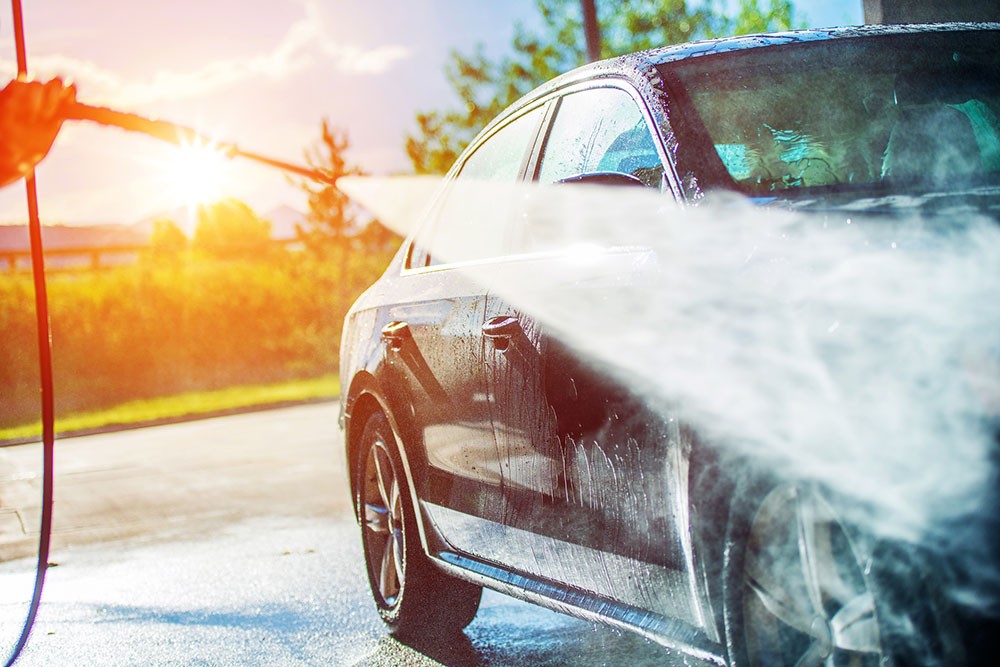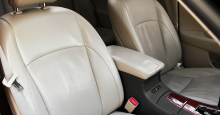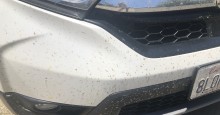
Your vehicle looked great pulling away from home but now, three days into the journey, it looks like a sticky mess.
How can you keep your vehicle looking its best on your next summer road trip?
Mike Pennington of Meguiar’s has logged thousands of miles across summer roads and has created a road warrior strategy for car care.
“Heat and sun quickly bake on anything that lands on your vehicle during summer,” said Pennington, who is global director of training at the international company. “And if you are on a road trip, do your best to remove bugs and debris before they have a chance to bond or etch onto the surface.
“If you’re staying at a hotel or campsite, be mindful of an errant sprinkler that could create tough water spots that dry on a hot surface.”
Summer's Damaging Heat
Exposure to heat and the sun’s ultraviolet rays also damage a vehicle’s upholstery.
“Apply protectants for vinyl and leather before leaving home to slow the effects of mother nature,” Pennington said. “Be mindful of all the fun summer activities that you enjoy and the outside environment you may unwittingly transfer into your car.”
Pennington listed some of the prime offenders–sand, dirt, sunscreen, pollen, sticky substances and soiled boots. All of them can make an unhealthy mess of your vehicle interior, and Pennington is a zealot for a clean cabin.
“Clean them up right away to remove allergens and odors,” Pennington said. “There’s a secondary benefit–preventing long term damage.”

Protect seats from damaging heat
For convertible owners, Pennington recommends using the top anytime you’re not driving.
“The convertible top not only prevents heat and UV from reaching surfaces, but it also keeps dust and debris from entering your interior. That means less time devoted to cleaning and more time devoted to fun on your adventure.”
Construction Zones Present Additional Issues
Summer construction zones across the country present gooey problems for drivers. Road tar adheres to your vehicle underbelly, sides and wheels. Dust adheres to sticky substances and makes shiny surfaces appear sooty.
“Do some research ahead of time to uncover construction zones. Formulate a Plan B to avoid any new asphalt and freshly-painted lines.”
Yet, who hasn’t been surprised by road crews laying down mucky asphalt?
In such circumstances Pennington reaches for his cell phone and searches for “car wash near me.” The local self-serve or drive-through car wash suffices until he gets back home for more thorough treatment.
“If you don’t get that stuff off your vehicle, it could bond and possibly scratch or etch the surface,” said Pennington, who takes pride in keeping a well-groomed vehicle while traveling.
Pennington deploys a power washer at self-serve car washes to clean the undercarriage and wheel wells--places where road grime accumulates and causes corrosion.

Remove bug goo as soon as possible
“Remove heavy duty build-up on the road to save time when you return home.”
Summer Bugs and Your Car Exterior
Pennington has encountered hordes of insects on his adventures across the fruited plains. Hell-bent on making a sticky mess of his pampered rides, Pennington’s terse words betray a head-nodding dismay.
“Bug goo is especially harmful.”
The sight of flying insects triggers Pennington’s call to arms. He reaches for a bottle of quick detailer stowed in his trunk. A few spritzes–spff, spfff–and the surface of his vehicle appears new again.
Detailing spray is one of several items Pennington bundles together for a car care kit.
“You can easily put together a great road trip bag with some key appearance care items to keep in the trunk of your vehicle to help keep your car clean and looking great while away from home.”
Among the products in Pennington’s car care kit for road trips:
- Waterless wash and wax solution. These kinds of products work well for quick touch ups as well as removing bugs, bird droppings and fresh water spots before they have a chance to damage the finish.
- Glass cleaner or glass cleaner wipes designed for automobile surfaces. Wipers blades are fine while driving but don’t remove all the contaminants and don’t cover the entire windshield surface. Glass cleaning wipes are easy to use on inside and outside surfaces. They’re also safe on widow film.
- Interior detailer wipes are convenient for impromptu clean-up on upholstery. Food and liquids can be safely removed to prevent odors, surface stains and mold.
- Microfiber towels may be used for inside and outside surfaces. They are compact, absorbent and easy to clean.
- Clay bars help remove hardened grit and grime. They are easy to stow and safely remove contaminants stuck to glass, wheel and painted surfaces.
When he’s on the road, Pennington makes a habit of keeping vehicle surfaces contaminant free. His goal is to save him time when he returns home and prevents stains or etching on exterior as well as interior surfaces.
Pennington’s tips for car care warriors:
- Immediately wipe up soiled interior surfaces and spills with microfiber towels. Soft drink and coffee spills can leave lasting stains and create a sticky mess.
- Use a window cleaner designed for automobile glass at rest stops. Cleaning window surfaces is a safety measure that improves visibility and helps prevent glare.
- Spritz bird dropping, sap and tar as soon as possible to prevent long-term damage. Saturate the area with a spray detailer and wipe with a microfiber towel.
- Wipe down your vehicle soon after summer storms to prevent water spotting.
- Routinely wipe off headlights and back-up camera to improve night time visibility and prevent blurry images on your vehicle’s dashboard monitor.
- Rinse rubber floor mats occasionally to cut down on allergens and odors in the cabin.
- Clean wheels with a microfiber towel to prevent stains and pitting. Do not use the same towel on other surfaces–such as upholstery, glass or paint–since wheel dust is corrosive and can cause permanent damage.
Copyright © 2024 by Sensible Driver. All rights reserved.